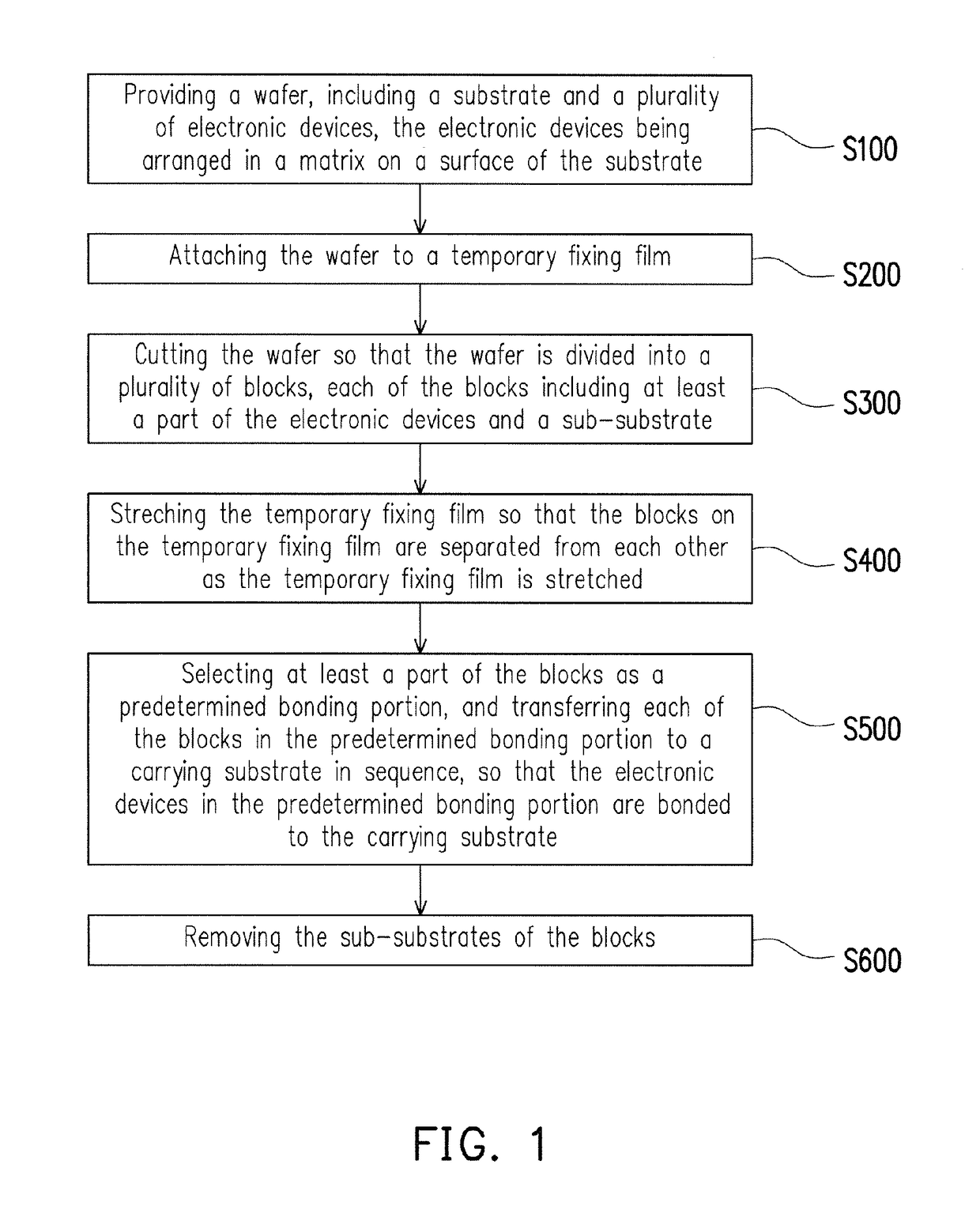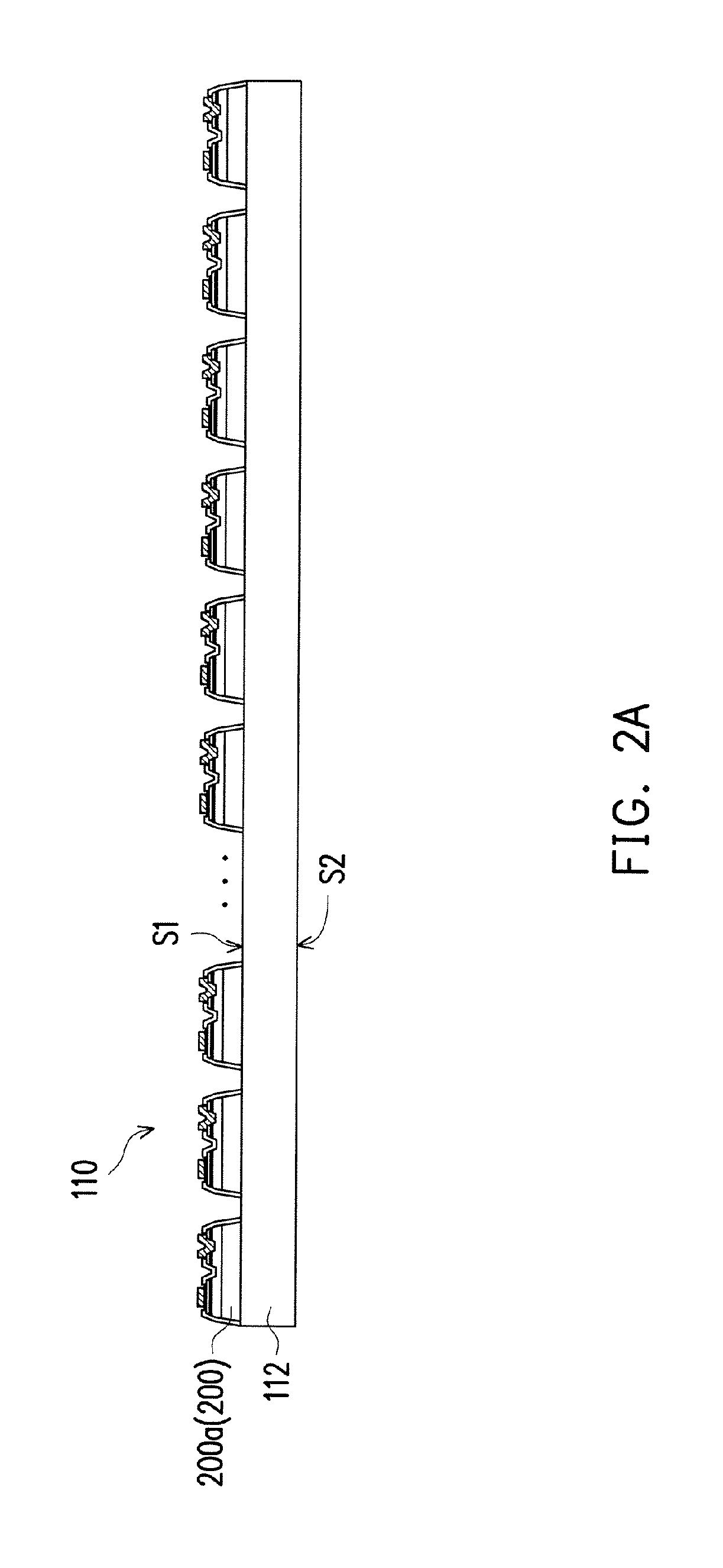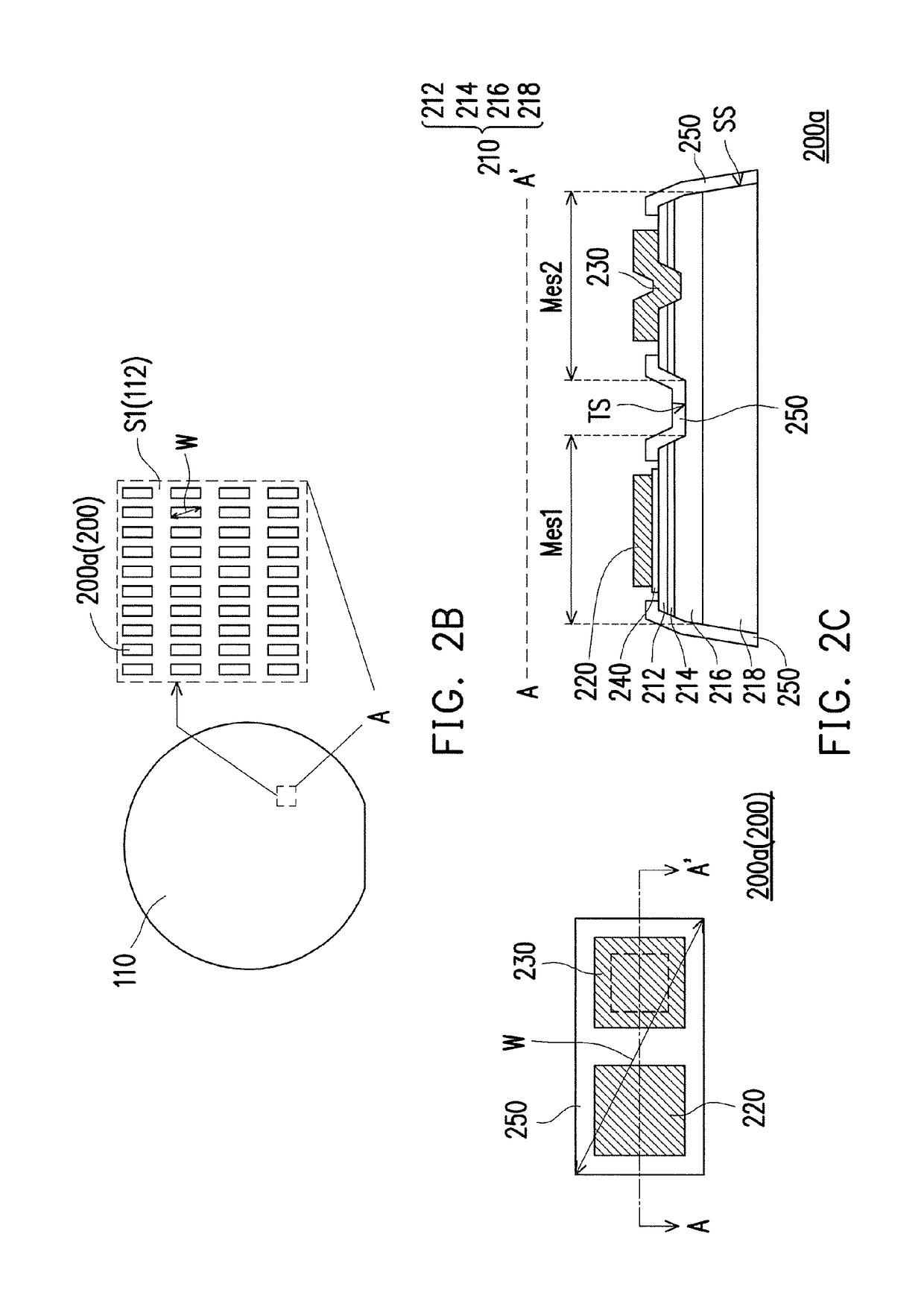Method of mass transferring electronic device
a technology of electronic devices and mass transfer, applied in the direction of solid-state devices, semiconductor/solid-state device manufacturing, electric devices, etc., can solve the problems of difficult to accurately align the micro light emitting diodes, over-long process time, and high cost, and achieve the effect of rapid and accurate mass transfer
- Summary
- Abstract
- Description
- Claims
- Application Information
AI Technical Summary
Benefits of technology
Problems solved by technology
Method used
Image
Examples
first embodiment
[0048]With reference to FIG. 6A and FIG. 6B, by applying an instantaneous force to the second surface S2 of the substrate 112 along the marks M with use of a splitting apparatus 130, the wafer 110 may be split into the blocks B on the temporary fixed layer 120. The splitting apparatus 130 is embodied as a chopper herein. The block B formed after splitting the wafer 110 may be regarded as one electronic device unit (e.g., one micro light emitting diode unit) including multiple electronic devices 200, such as the micro light emitting diode, for example. In the present embodiment, the number of the micro light emitting diodes 200a included by each of the blocks B falls within, for example, a range of 1 to 5×106, but the invention is not limited thereto. At this point, description regarding the first method for cutting the wafer 110 according to the invention is substantially complete.
[0049]The second method for cutting the wafer in the first embodiment of the invention is approximately...
second embodiment
[0069]With reference to FIG. 12, FIG. 18A and FIG. 18B, in step S1300, the red micro light emitting diode wafer 110c is bonded to the carrying substrate BS so that the red micro light emitting diodes 200′″ corresponding to the third positions P3 are bonded to the third positions P3 through the third bonding electrode pairs BEP3. Herein, the bonding method may be, for example, a thermocompression, the reflow process or the anisotropic conductive film mentioned above. Next, with reference to FIG. 12, FIG. 19A and FIG. 19B, in step S1400, the third substrate 112c is removed. The removing method is, for example, etching the third substrate 112c by aqueous ammonia (NH4OH) and hydrogen peroxide (H2O2). Alternatively, the third substrate 112c may be removed through a chemical reaction, a physical reaction (removing the substrate by polishing) or a dry etching. At this point, the method of mass transferring electronic devices in the invention is substantially complete.
[0070]It should be not...
PUM
 Login to View More
Login to View More Abstract
Description
Claims
Application Information
 Login to View More
Login to View More - R&D
- Intellectual Property
- Life Sciences
- Materials
- Tech Scout
- Unparalleled Data Quality
- Higher Quality Content
- 60% Fewer Hallucinations
Browse by: Latest US Patents, China's latest patents, Technical Efficacy Thesaurus, Application Domain, Technology Topic, Popular Technical Reports.
© 2025 PatSnap. All rights reserved.Legal|Privacy policy|Modern Slavery Act Transparency Statement|Sitemap|About US| Contact US: help@patsnap.com



